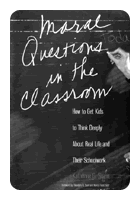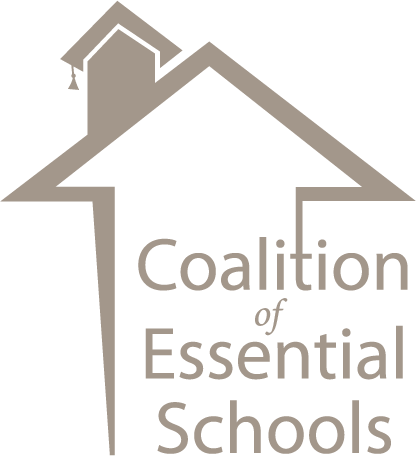 The book review that follows was written many weeks before the tragic events of September 11, 2001. Those events, I believe, highlight the importance of exploring hard questions in our classrooms.
The book review that follows was written many weeks before the tragic events of September 11, 2001. Those events, I believe, highlight the importance of exploring hard questions in our classrooms.
In 1993, I taught a unit on The Adventures of Huckleberry Finn that turned out to be a bit flat. During class discussion one morning, I made reference to the fact that Huck had been banned in many schools and school districts because of its “racist overtones.” “Where had it been banned? Why had it been banned? How could Huck, of all the books we have read, have been banned?” my students asked, it seemed in unison. As I have come to learn, with help from Kathy Simon’s new book, Moral Questions in the Classroom, my mode for addressing a sensitive issue like racism, at that moment in my teaching career, was to talk abstractly about it and to wonder aloud why racist language might have been more commonplace in the 19th century. I behaved the way Simon’s research suggests most teachers behave when faced with difficult questions from my students: I controlled the discussion. Had Simon’s book been around at that time (and had critical friends’ groups existed), I might have been emboldened to respond to the students’ questions and bring to life the issues we know Twain wrestled with as he wrote the novel. Instead, I did what Simon found many of us do when faced with hard questions from the kids, I remembered that we had a lot to cover, and I moved us along.
Chris, an outspoken and wisecracking junior, wouldn’t let me proceed. He was both incensed and fascinated by the phenomenon of censorship. In fact, he was so agitated that he lingered at the end of class, as he had a tendency to do, and questioned me on my reading selections for the class. “Why not read only banned books?” he asked, “They must be worth reading.” My thin response invoked standards of literary quality (that begged the question of whose standards) and “coverage.” We had to read The Scarlet Letter and The Crucible, I argued to Chris, because they were critical to “appreciating” American Literature (not because they would awaken the students’ imaginations or their love of reading). These lessons are clearer eight years later, especially when considered in light of Simon’s provocative and fascinating book.
Teaching well, as Simon reminds us, is tremendously difficult. Teaching controversial issues and moral questions well asks even more of a teacher. It asks us to know our subjects and topics from many different perspectives, and it asks us to be brave and open-minded. As Simon points out, to wrestle with moral essential questions means to embrace the Coalition’s second common principle, less-is-more, in a sophisticated and bold way; it means we must learn to practice pedagogical neutrality (not to be confused with moral relativism), and we must try to conceive of our respective disciplines as more than a set of plots, terms, dates, or characters. In reflecting on Dewey’s work, Simon writes, “Our aim in curriculum design must be to connect the record of humanity’s great inquiries to the curiosities of the child.”
As a daily practitioner, I know that the lofty rhetoric of Dewey is hard to make real, but I also know how powerful a child’s curiosities can be. Chris was willing and eager to help me redesign my English class around questions of censorship and freedom of expression. Unfortunately, I was not ready to hear him. Simon knows that not all of us may be ready to hear her, and while her book identifies many of the obstacles to the kind of teaching and learning we all wish for, she spends the bulk of her time getting us into the classrooms and the minds of teachers and showing us how it might be different. If you want to jumpstart the way you think about your discipline, read it. If you are eager to see the “teachable moments” in your school differently, read it. And lastly, if you appreciate but aren’t sure what to do with the hard questions that come from our students, read it. Moral Questions in the Classroom will help you hear them better.
reviewed by Ted Graf
Ted Graf is the Assistant Head at Watkinson School in Hartford, Connecticut and President of the Coalition’s Executive Board. Katherine G. Simon is Director of Research and Professional Development at CES National.
